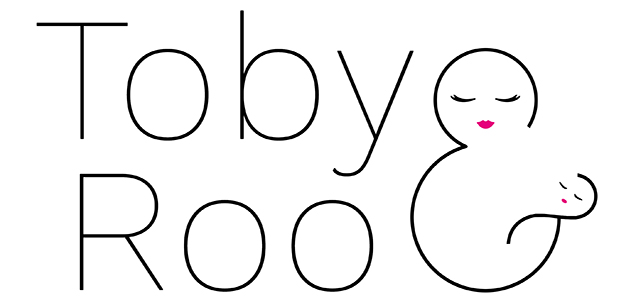Building a treehouse is a magical project that creates lasting memories for kids and parents alike. It provides children with their own special space to play, imagine and enjoy the outdoors. While constructing a treehouse may seem daunting at first, with careful planning and the right tools and materials, you can bring your child’s dream to life.
Choosing the Right Tree and Location
When planning your kids’ treehouse, picking a suitable tree and location in your backyard is crucial. Here’s what to consider:
Tree Selection:
- Health: Ensure the tree is robust, healthy, and free of disease.
- Age: Choose a tree that’s mature as younger trees may lack strength.
- Species: Oak, maple, and beech trees are ideal due to their strong trunk and branches.
Considerations for Location:
- Nature and View: Look for a spot offering a pleasant view and merging with nature without disturbing it.
- Safety: Avoid locations near power lines or too close to the house.
- Tree Growth: Think about how the tree will grow over time and how that will affect your treehouse.
Treehouse Ideas Placement:
- Sunlight: Your tree should get ample sunlight but also offer shade to make the treehouse comfortable.
- Visibility: Position the treehouse so it’s visible from your home for safety.
Here’s a quick checklist for your reference:
| Checklist Item | Why It Matters |
| Mature Tree | Ensures strength and stability for the structure |
| Healthy and Disease-Free | Prevents future complications |
| Solid Branches | Provides reliable support for the treehouse |
| Good Location | Maximizes safety and enjoyment |
| Future Growth | Accommodates the tree’s changes over time |
By thoroughly assessing these elements, you’ll set a solid foundation for a treehouse that will be the pride of your backyard and a haven for adventure and fun.
Designing Your Treehouse
Designing your treehouse is both an exciting opportunity to tailor a special place for your kids and a critical step to ensure their safety and the treehouse’s longevity. Let’s start with sketching out a blueprint, choosing the right materials, and considering important safety features.
Creating a Blueprint
1. Visualize Your Treehouse: Begin by visualizing the treehouse you want to create. Whether you’re aiming for a modern look with clean lines and large windows or a rustic charm that harmonizes with nature, jot down your design ideas.
- Sketch out your ideas: Try to be as detailed as possible to foresee any design issues.
- Consider the tree’s shape: Adapt the design to fit the tree’s existing structure without causing harm.
Selecting Materials
2. Choose Durable Materials: Your choice of materials will influence the treehouse’s durability and safety.
- Wood: Use pressure-treated or naturally rot-resistant wood for structural components.
- Fasteners: Opt for stainless steel or galvanized screws and bolts to prevent rust.
Below is a simple materials table for reference:
| Material Type | Specific Use | Notes |
| Pressure-treated lumber | Structure, floor, supports | Long-lasting against the elements |
| Cedar or Redwood | Aesthetics, walls, railings | Naturally resistant to decay |
| Plexiglass or safety glass | Windows | Durable and safer for children |
Safety and Accessibility Features
3. Prioritize Safety: Your blueprint should integrate features that ensure the treehouse is a safe place for kids to play.
- Railings: Include sturdy railings around open edges.
- Ladder/Stairs: Design a stable ladder or set of stairs with even steps for easy access.
- Inspections: Plan for regular inspections of the tree’s health and the integrity of the structure.
Gathering Materials and Tools
To get started building a treehouse for your kids, you’ll need to assemble the right materials and tools. The heart of your construction will be wood—choose from options like pressure-treated wood, fir, or even reclaimed wood for an eco-friendly choice.
Materials:
- Lumber: A selection of 2x4s, 2x8s for joists, and plywood for flooring and walls
- Lag Bolts: For sturdy tree attachment
- Joist Hangers: To support the floor joists
- Structural Screws: Essential for a lasting construction
- Pressure-Treated Wood: Ideal for parts that will be exposed to the elements
For the tools, having some building experience is helpful, but not mandatory. You will need basic tools such as scissor lift to help you lifting materials:
| Tools Needed | Purpose |
| Hammer | For driving in nails and other general uses |
| Saw | For cutting the lumber to size |
| Drill | To pre-drill holes for screws and lag bolts |
| Measuring Tape | For precise measurements |
| Level | To ensure your structure is even |
| Jigsaw | To cut around tree trunks if needed |
| Safety Gear | Such as gloves and goggles for protection |
It’s crucial that your treehouse has a firm foundation, so be methodical in selecting the right materials that will ensure the safety and longevity of the structure. Friendly reminder: Always prioritize quality materials and the proper usage of tools to ensure that the fun space you’re creating is not only playful but also safe.
Building the Platform and Foundation
When building a treehouse for kids, the foundation and platform are the critical starting points. You’ll want to ensure safety and stability with secure supports and a sturdy platform.
Securing the Support
Firstly, identify load-bearing branches that can support your treehouse. If you’re not working with branches, you’ll need to establish a robust support system that involves notch and blocking elements to secure the structure directly onto the tree.
- Mark notches where the main support beams will rest against the tree. These notches help distribute the weight more evenly and reduce movement.
- Secure your blocking materials (these could be wooden blocks or metal braces) around the tree without strangling it to create a flat, stable surface for the beams.
Installing the Platform
Once you have your support in place, you’ll install the treehouse platform:
- Create a deck frame using pressure-treated lumber, ensuring you leave enough space around the tree for growth.
- Attach the frame securely to the supports with diagonal bracing for added stability.
- Lay down the decking material to form the floor of your platform, making sure all boards are level and securely fastened.
Here’s a basic layout of your platform’s deck frame:
—————————-
| Deck |
| |
| Bracing Bracing |
| |
—————————-
If you’re building near the ground, you may want to set concrete footings for additional support. Here’s how:
- Dig holes measuring at least 10″ x 10″ x 10″ beneath each support point.
- Pour concrete into the holes and insert galvanized wire or brackets to secure the supports.
When planning your deck, think about a cantilever design if you wish to extend the platform’s edge beyond its supports, but ensure you do not extend too far to maintain the structure’s integrity. Keep these extensions to a minimum to prevent the risk of tipping or uneven weight distribution.
Constructing the Treehouse
In constructing a treehouse, focus on building a sturdy frame, ensuring stable walls and roof, and installing functional windows and doors. Each step is vital in creating a safe and lasting retreat for kids.
Framing the Structure
To start, identify a healthy, strong tree that can support your treehouse. Use 4 x 4 posts set on concrete deck blocks for the base and ensure they are level. Then, construct the frame by connecting the posts with 2 x 8 bands for stability. Attach knee braces for additional support between the tree and the tree deck, which can alleviate movement and stress on the tree.
When laying the deck boards, leave space for the tree to grow. Secure the decking with screws, preferably 4” deck screws, spaced evenly, and consider adding a railing with balusters for safety.
Adding the Roof and Walls
After the frame and decking are complete, it’s time to construct the roof and walls. Use lightweight materials to minimize the strain on the tree. Start with framing the walls, ensuring they are flush with the deck’s edge and secured appropriately.
For the roof, you’ll want to create a structure that can shield against the elements. Consider a slanted design to prevent water buildup. Attach roofing materials starting at the bottom, and layer each piece to allow water runoff.
Installing Windows and Doors
Windows and doors are crucial for ventilation and access. Choose the location of your windows and doors carefully and cut out the openings with
Adding Fun Features
Incorporating elements that inspire play and adventure will transform your treehouse into a thrilling retreat for your kids. Remember, safety is paramount—ensure all features are securely installed and appropriate for your child’s age.
Swings and Slides
Swings add a timeless charm to any treehouse. Install a sturdy beam to support your swings and opt for quality, weather-resistant materials.
- Swing Types:
- Classic flat seat
- Tire swing
- Rope or disc swing
For slides, you have a variety of options that range from straight to wavy or even spiral. Consider the height and angle of the slide for a safe exit from the treehouse.
- Slide Considerations:
- Space available
- Safe landing area
- Material durability
Climbing and Ziplining
A rock-climbing wall or cargo net offers a fantastic way for kids to improve their strength and coordination. Here’s what to focus on:
- Rock-Climbing Wall:
- High-quality grips for different skill levels
- Safe fall zone with impact-absorbing material
- Cargo Net:
- Tightly woven, robust netting
- Secure attachment to both tree and treehouse
Adding a zipline can be an exhilarating feature. It should start from a stable platform and end in a secure, cushioned area away from obstacles.
- Zipline Setup:
- Strong, smooth cable line
- Comfortable seat or harness
- Proper tension to ensure safe speed
Finishing Touches
After crafting the structure of your treehouse, adding the final touches can transform it from a simple playhouse to an epic treehouse that encapsulates the imagination and provides a haven for play. Focus on decoration, furnishing, and mandatory safety inspections to create a secure and enchanting retreat in the trees.
Decoration and Furnishing
Decoration: Brighten up your treehouse by painting the walls in vibrant colors that spark joy and creativity. Consider a lively palette that can turn the clubhouse into a whimsical space. Adding curtains to the windows can give it a cozy, lived-in feel.
- Pillows and Cushions: Scatter a mix of colorful pillows and cushions, providing comfort and an inviting atmosphere for younger kids to lounge and read.
- Bunks and Porch: If space allows, install bunks for sleepovers. A small porch can serve as the perfect lookout spot or a place for board games.
Furnishing:
- Comfort: Incorporate beanbags for a fun seating option or hammocks for a lazy afternoon nap.
- Play Features: Outfit the interior with features like a chalkboard for drawing or a small rock wall for climbing. The playhouse should be a space that encourages active outdoor play.
Safety Inspections
Before letting the adventure begin, conducting thorough safety inspections is crucial. Make sure to check every aspect of the treehouse to ensure a safe environment.
- Structure Stability: Verify the sturdiness of the treehouse. It should support the weight and movement of children playing.
- Railings and Openings: All railings should be secure, and window or balcony openings need to be of appropriate sizes to prevent accidental falls.
Safety Checklist:
- Tighten all bolts and screws.
- Ensure there’s ample space for the tree’s growth.
- Examine ropes, ladders, or any climbable feature.
Creating a treehouse requires attention to detail, especially when it comes to the finishing touches that make it shine. Careful decoration and rigorous safety checks are what will elevate your simple treehouse to a beloved outdoor space that stirs the imagination and fosters joyous play for years to come.




